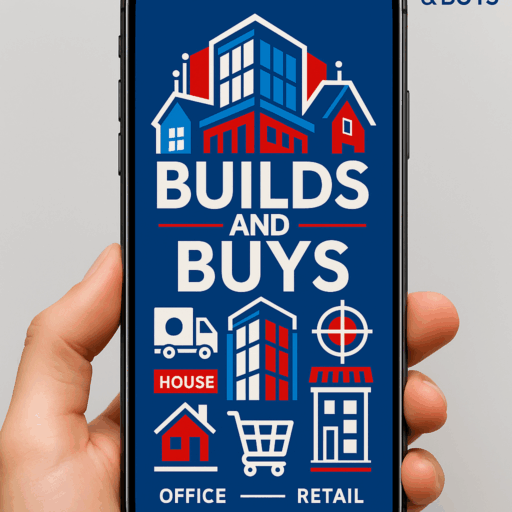
Check out our app!
Explore more features on mobile.
Buying A House With Bad Credit: Advanced Strategies and Expert Insights
Purchasing a home with a low credit score may seem daunting, but it’s far from impossible. This article delves deep into proven tactics, market data, and specialized financing options that help homebuyers with less-than-perfect credit secure a property. You’ll also find Builds and Buys’ unique step-by-step guidance for building, buying, and investing—all tailored for those navigating the challenges of bad credit.

[Image Caption: Understanding the journey of buying a home with bad credit]
1. The Realities of Buying a House With Bad Credit
Credit scores significantly influence your mortgage rate and overall homebuying experience. According to recent market data, conventional loans typically require a FICO score of at least 620, while government-backed loans (e.g., FHA) may accept scores as low as 500–580. The downside? Higher interest rates and stricter lending conditions.
- Subprime lending growth: Non-traditional lenders now cater to buyers with credit challenges.
- Tougher underwriting: Lenders scrutinize income stability and debt-to-income (DTI) ratios.
- Rebuilding credit matters: Even small improvements can reduce your interest rate significantly.
Internal link placeholder: Check out our Comprehensive Mortgage Guide for more on conventional vs. government-backed loans.
2. Mortgage Options and Programs
Having a lower credit score often means fewer conventional options. Thankfully, several programs can help:
- FHA Loans: Require a 3.5% down payment for scores ≥580, though scores as low as 500 require a 10% down payment.
- VA Loans: Reserved for veterans and active-duty personnel; no official minimum score, but most lenders prefer ≥580.
- USDA Loans: Ideal for rural properties, often allowing 100% financing for scores ≥640.
- Non-QM (Non-Qualified Mortgage): Available for self-employed or credit-challenged borrowers; expect higher rates.
3. Cost Breakdown & Interest Rate Comparisons
Interest rates vary widely by credit score. Higher rates mean larger monthly payments and more interest over time. The table below illustrates potential monthly payments on a $250,000 mortgage (30-year fixed), based on different credit score brackets.
| Credit Score Range | Approx. Interest Rate | Monthly Payment (Principal & Interest) |
|---|---|---|
| 500 – 579 | 7.0% – 9.0% | $1,663 – $1,998 |
| 580 – 619 | 6.0% – 7.0% | $1,499 – $1,663 |
| 620 – 679 | 5.0% – 6.0% | $1,342 – $1,499 |
| 680 & Above | 3.5% – 5.0% | $1,123 – $1,342 |
Key takeaway: Improving your score before locking in a mortgage can save you thousands (if not tens of thousands) over the life of the loan.
Use our free Mortgage Calculator to compare monthly payments based on different credit scenarios.
4. Builds and Buys: Step-by-Step Guidance
Our unique system focuses on three core pillars—Build, Buy, and Invest—to guide you through every stage of homeownership.
BUILD: Strengthen Your Financial Foundation
- Create a budget and track spending to identify areas for savings.
- Reduce high-interest debt to improve your DTI ratio.
- Dispute any errors on your credit report; even small fixes raise your score.
BUY: Navigate the Mortgage and Purchase Process
- Obtain pre-approval from a lender offering flexible credit requirements.
- Shop around for multiple mortgage quotes; compare rates and fees.
- Focus on properties within your realistic budget to prevent future financial strain.
INVEST: Leverage Home Equity and Alternative Strategies
- Consider house hacking or renting out rooms to offset mortgage payments.
- Explore home equity lines (HELOCs) for property improvements and value increases.
- Revisit refinancing options once your credit score improves.
5. Investor Strategies & Case Studies
Real estate investors with low credit often use creative financing and strategic partnerships to close deals. One popular tactic is joint venturing with a partner who has good credit to secure better loan terms. Another method is “lease-option” agreements, allowing you to lock in a home price now, improve your credit, and exercise the purchase option later.
Case Study Example:
John, a self-employed contractor with a 580 FICO score, purchased a duplex using a 10% down FHA loan. He rented out the other unit, covering 70% of his mortgage costs. After 18 months, he refinanced at a better rate once his credit improved to 640, saving over $300/month.
6. Frequently Asked Questions
A: Yes, programs like FHA and certain non-QM lenders work with scores even below 580. Expect higher interest rates and/or larger down payments.
A: It can be. You lock in a purchase price, work on improving your credit, and then buy the home at the end of the lease term.
A: A co-signer with strong credit could help you get approved or get better terms, but remember they share legal responsibility for the loan.
Start your journey by strengthening your credit profile and exploring flexible mortgage options. Follow our Step-by-Step Guides to Build, Buy, and Invest in the home of your dreams—even with bad credit.
Real Estate News And Knowledge
Stay informed with the latest trends, insights, and updates in the real estate world.
Your Tools
Access your tools to manage tasks, update your profile, and track your progress.
Collaboration Feed
Engage with others, share ideas, and find inspiration in the Collaboration Feed.




